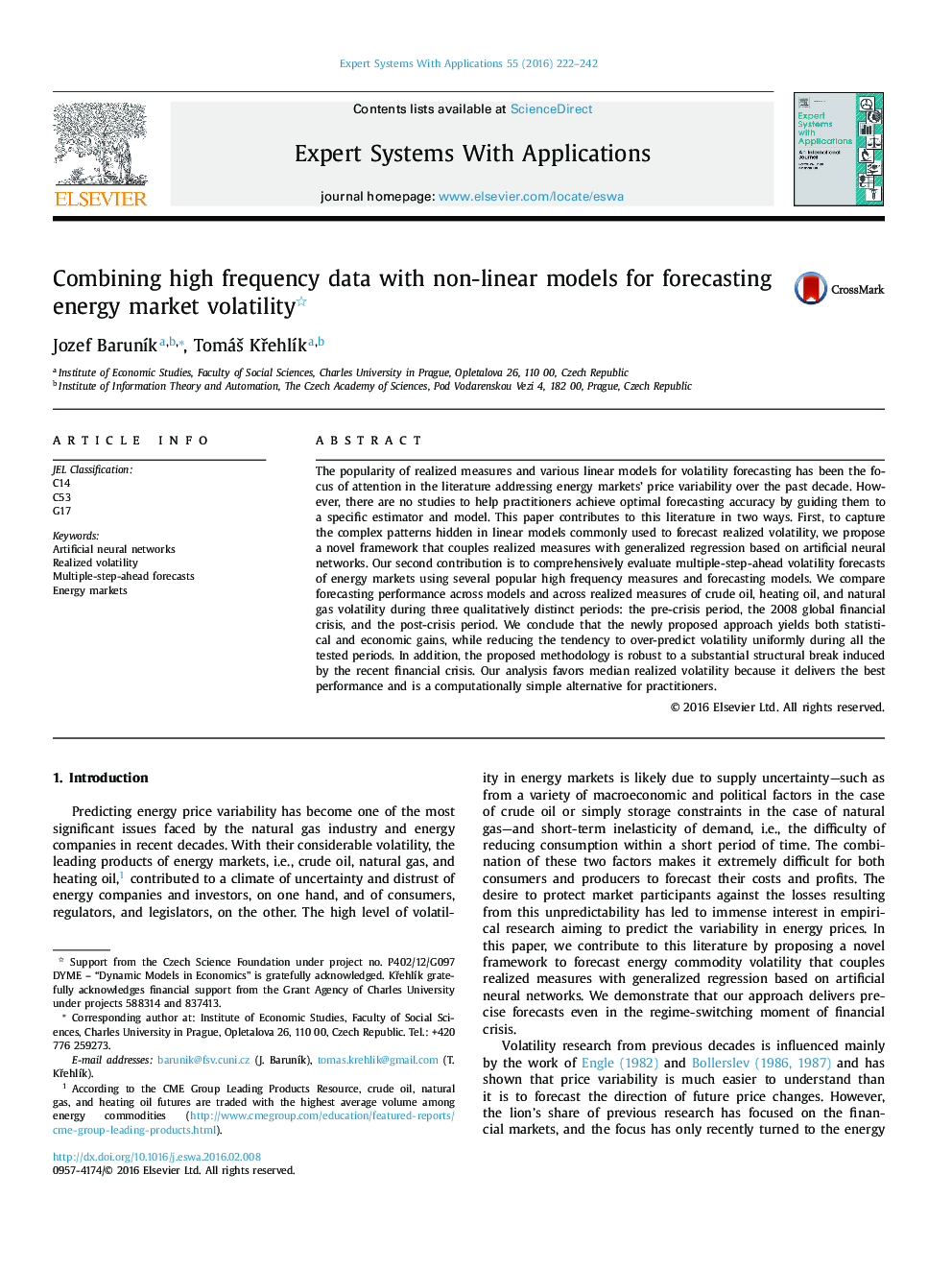| کد مقاله | کد نشریه | سال انتشار | مقاله انگلیسی | نسخه تمام متن |
|---|---|---|---|---|
| 383163 | 660807 | 2016 | 21 صفحه PDF | دانلود رایگان |
• High-frequency data are coupled with nonlinear models to predict volatility.
• Comprehensive evaluation of multiple-step ahead volatility forecasts is provided.
• Neural networks provide both statistical as well as economic gains.
• Neural networks reduce tendency to over-predict volatility.
The popularity of realized measures and various linear models for volatility forecasting has been the focus of attention in the literature addressing energy markets’ price variability over the past decade. However, there are no studies to help practitioners achieve optimal forecasting accuracy by guiding them to a specific estimator and model. This paper contributes to this literature in two ways. First, to capture the complex patterns hidden in linear models commonly used to forecast realized volatility, we propose a novel framework that couples realized measures with generalized regression based on artificial neural networks. Our second contribution is to comprehensively evaluate multiple-step-ahead volatility forecasts of energy markets using several popular high frequency measures and forecasting models. We compare forecasting performance across models and across realized measures of crude oil, heating oil, and natural gas volatility during three qualitatively distinct periods: the pre-crisis period, the 2008 global financial crisis, and the post-crisis period. We conclude that the newly proposed approach yields both statistical and economic gains, while reducing the tendency to over-predict volatility uniformly during all the tested periods. In addition, the proposed methodology is robust to a substantial structural break induced by the recent financial crisis. Our analysis favors median realized volatility because it delivers the best performance and is a computationally simple alternative for practitioners.
Journal: Expert Systems with Applications - Volume 55, 15 August 2016, Pages 222–242
